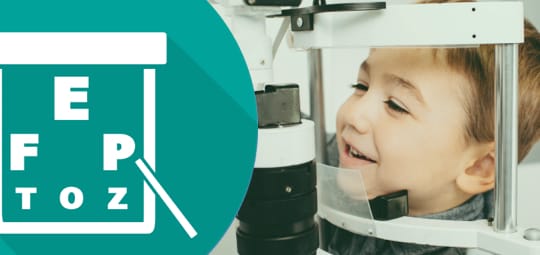Protect Your Long-Term Ocular Health
Many common eye diseases can potentially cause blindness, and your risk of developing them increases with age. However, with early diagnosis and treatment, it is possible to prevent vision loss. Regular eye exams are vital to managing your long-term eye health.
We have the skills and technology to identify any possible eye conditions and provide effective treatments.

Common Eye Diseases & Conditions
Cataracts
A cataract is the clouding of the eye’s lens. This condition is the leading cause of vision loss in the United States. Cataracts generally develop with age as normal changes in the lens slowly begin to affect your vision.
You may not notice mild cataracts at first, but with time, they can impair your eyesight. Symptoms of cataracts include:
- Cloudy or blurry vision
- Colors looking faded
- Poor vision at night
- Halos around lights
- Light sources seem too bright
When cataracts start impacting your vision, you may require cataract surgery. Cataract surgery involves removing the cloudy lens and replacing it with an artificial lens, providing you with clear vision. Cataract surgery is generally safe, but we can answer any questions or concerns you may have.
Glaucoma
Glaucoma is a group of eye diseases that damage the optic nerve. Many forms of glaucoma show little to no symptoms until vision loss occurs. Without proper intervention, you may experience severe vision loss or blindness.
At Stanford Ranch Optometry, we complete several tests to look for glaucoma. A common way to identify potential signs of glaucoma is by measuring your intraocular pressure (IOP). Most but not all forms of glaucoma can raise your IOP.
We can measure your IOP using tonometry.
GoldMann Applanation Tonometry
Considered the standard of measuring IOP, this tonometer measures the force required to flatten your cornea. The tonometer will gently measure and present your IOP measurement after pressing a probe against your eye..
iCare
The iCare tonometer is a portable device for monitoring IOP. It requires no anesthetic drops because nothing touches your eye. The device lines up with your eye before displaying a green light to indicate proper positioning.
There are several types of glaucoma.
Open-Angle Glaucoma
Open-angle glaucoma affects approximately 3 million Americans. Fluid cannot drain out of the eye because the drainage canals of the eye become clogged. Eye pressure then slowly increases and damages the optic nerve.
Angle-Closure Glaucoma
Angle-closure glaucoma is a serious medical condition, occurring when the iris is not wide or open enough, and its outer edge bunches up over the drainage canal. The blocked drainage canals trap fluid, which can cause a pressure build-up in the eye. When the pupil enlarges too quickly (like when you walk into a dark room), the drainage canal becomes blocked, causing IOP to rise rapidly.
Acute angle-closure glaucoma is a medical emergency requiring immediate treatment.
Normal-Tension Glaucoma
Normal-tension glaucoma differs from other forms because eye pressure remains the same. Glaucoma usually increases pressure in your eye, but pressure stays low or consistent with normal-tension glaucoma while the optic nerve still sustains damage.
Age-Related Macular Degeneration
Age-related macular degeneration (AMD) is an eye disease causing the loss of central vision. Aging can damage your macula, the part of the eye responsible for sharp central vision. While this disease does not cause complete blindness, it can affect your ability to see faces, read, drive, or complete close-up tasks.
There are 2 types of AMD:
- Dry AMD: Dry AMD is more common and occurs when the macula gradually becomes thinner with age. It typically progresses over several years.
- Wet AMD: Wet AMD is less common but more severe, causing rapid vision loss. It occurs when abnormal blood vessels grow in the back of the eye and damage the macula. Wet AMD is a medical emergency and requires immediate care.
Protect Your Vision
Eye diseases can be confusing and possibly daunting to experience, but we are here to support you. Many eye diseases require life-long care, but we can help you throughout the entire process. Please book an appointment, and we can begin protecting your vision.

OUR LOCATION
Come See Us Today
Experience full-spectrum eye care at Stanford Ranch Optometry.
Parking
There is ample parking in the front and to the side of the office.
Our Address
- 2320 Sunset Blvd., Suite #110
- Rocklin, CA 95765
Contact Information
- Phone: 916-624-9396
- Email: StanfordRanchOptometrykl@gmail.com
Hours Of Operation
- Monday: 9:00 AM – 6:00 PM
- Tuesday: 9:00 AM – 6:00 PM
- Wednesday: 9:00 AM – 6:00 PM
- Thursday: 9:00 AM – 6:00 PM
- Friday: 9:00 AM – 5:00 PM
- Saturday: Closed
- Sunday: Closed
Our Services
Our Brands












